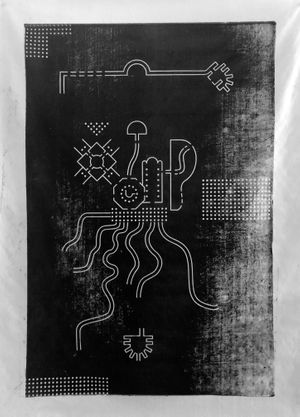A Shift from Monolithic Body to Coherent Disparate Parts
In the middle of the twentieth century the city was conceptualized within architectural and urban discourse as a body. Architecture was then thought of as having an organ-like solution to repairing this body, which was thought of at various times in the twentieth century as being deficient. With this metaphor came a city-based design project that attempted to reign in post-war city expansion, one of these identified deficiencies. The results were varied, but at its core this new city was so predetermined that it rarely allowed for the original free spirit of the early metropolii. Or so it has also been argued. The foundation of these ideas can be traced Le Corbusier’s insertion of a city within a building, the monolothic Unité D’habitation, an attempt to make sense of the city as it changed through heavily programmed monumental objects.
The plan above starts to reimagine Le Corbusier’s idea of a city within a building by disemboweling the architectural body of Le Corbusier’s Unité, allowing the programmatic form to spill into the prairie of Kansas. As a result a new relationship between architectural form and programmatic use emerges, a shift from a body with organs as well as organs without a body to a characteristically different cultural form: the organs without a body. Within this formal modality of small-scale organs, architecture no longer focuses solely on a priori programmatic use. Form no longer follows function. Instead the organs that once were contingent upon a predetermined wholistic form allow for a new in-between that does not need a monumental object-like coherence to survive culturally in part because these organs allow for existing constituencies in the city to define hierarchical use. At the small-scale these organs functions more like stage sets that can be defined by inhabitants and entities in the city.
What emerges from the prairie is not a monumental object, but a collection of architectural and cultural characters.
*An inversion of Deleuze’s “How to Build Yourself a Body without Organs.”

